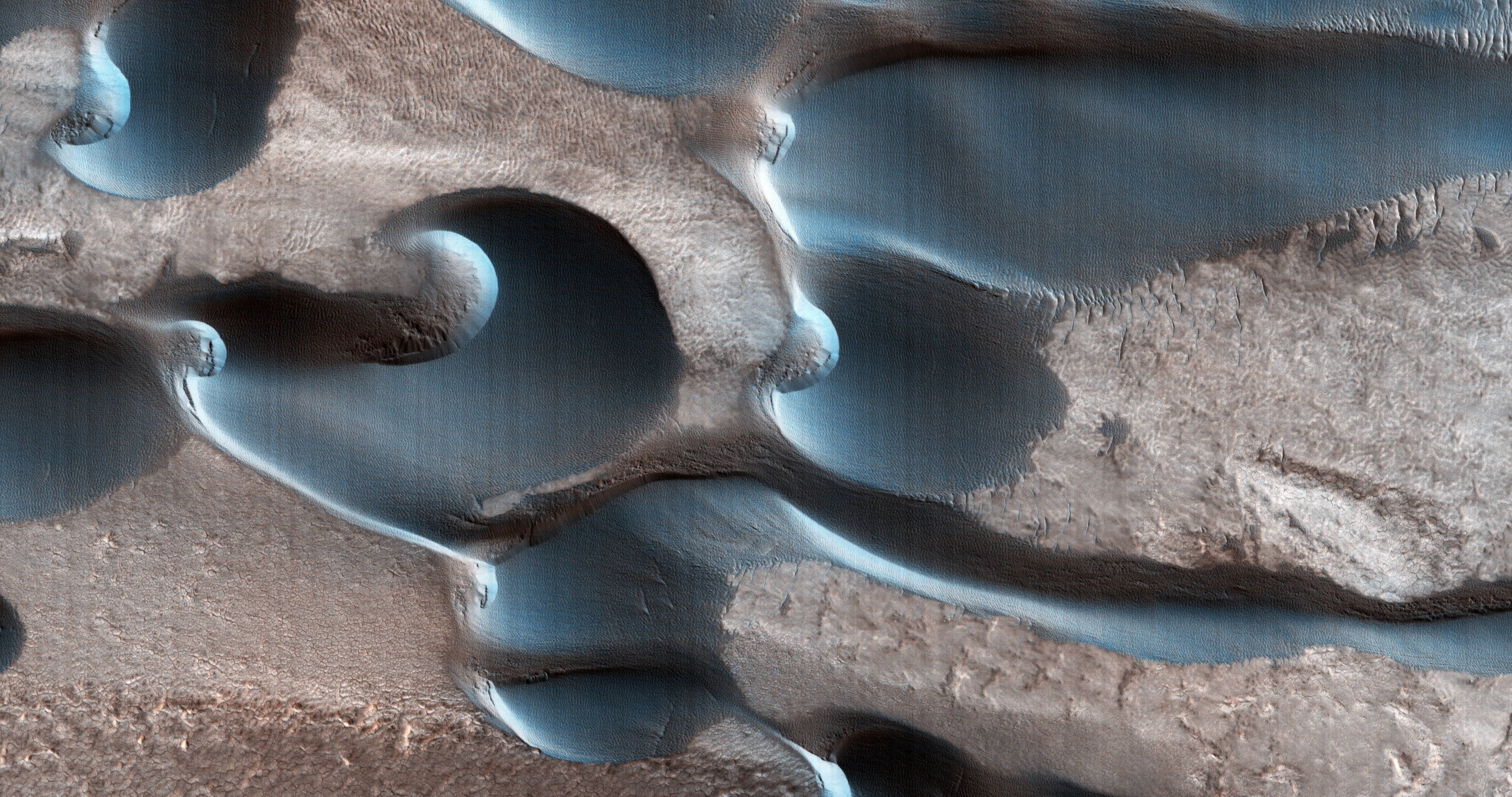 |
| Wind-sculpted dunes on Mars. Credit: NASA/JPL-Caltech/UArizona |
This amazing image from the Mars Reconnaissance Orbiter's HiRISE camera depicts a field of unusual dunes known as barchan dunes. These dunes grew along a cliff at Chasma Boreale, Mars' North Pole. HIRISE, or High-Resolution Imaging Experiment, is a powerful camera that can see details as tiny as a desk from orbit. The image above depicts a region less than one kilometer (one mile) broad, and MRO was approximately 197 kilometers above the surface when the image was obtained.
According to HiRISE scientists, barchan dunes are prevalent on both Earth and Mars. These dunes are usually highly unique in shape and are significant because they can teach scientists about the environment in which they evolved as well as the direction of the winds at a specific place. Barchans occur in sandy places when the wind blows in one direction. This results in the formation of a crescent-shaped sand dune. Sand arcs that characterize the barchan dunes terminate in "horns" that point downwind, while sand is blown into crests and slopes. From above, this frequently produces a shape that resembles the Star Trek logo.
Because the dunes depicted above aren't in the usual crescent, chevron configuration, the winds near the Martian North Pole must whirl in all directions. The photo was taken with the camera's red-green-blue filter, which gave the sand a blue look. The HiRISE camera uses visible wavelengths, just like human eyes, but with a telescopic lens, making it one of the highest resolution cameras in space right now. These high-resolution photos allow scientists to differentiate 1-meter-size (approximately 3-foot-size) items on Mars and examine the surface structure considerably more thoroughly than any prior Mars mission.
HiRISE also observes near-infrared wavelengths to learn more about the minerals present. MRO has been in Mars orbit since 2006, and the mission's endurance allows planetary scientists to study changes over time. The team's purpose in obtaining the main photograph is to study seasonal changes in this location over time.



0 Comments